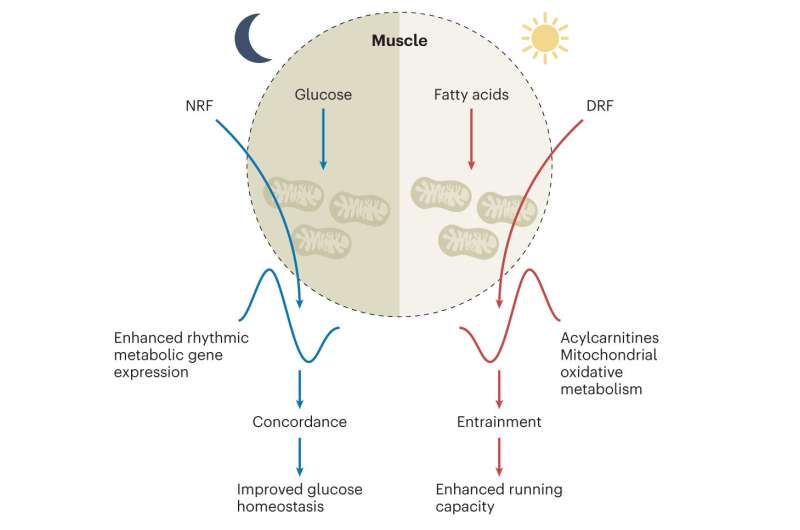June 28, 2023 report
This article has been reviewed according to Science X's editorial process and policies. Editors have highlighted the following attributes while ensuring the content's credibility:
fact-checked
peer-reviewed publication
trusted source
proofread
Study finds mice make better distance runners on time-restricted diet

A study led by the Department of Cardiovascular Medicine, Center for Circadian Metabolism and Cardiovascular Disease, Southwest Hospital, Army Medical University, China, looked into how meal timing regulates exercise capacity in mice and the relationship to their circadian clock.
In a paper titled, "Daytime-restricted feeding enhances running endurance without prior exercise in mice," and published in Nature Metabolism, the researchers investigated the effects of day/sleep time-restricted feeding on running endurance in sedentary and exercise wheel trained mice.
Researchers measured exercise capacity in mice subjected to different feeding regimens and found that day/sleep time-restricted DRF significantly enhanced running time and distance compared to ad libitum (AL—free to eat whenever hungry) feeding or normal chow (NRF) at specific time points during the day. This effect was observed in both female and male mice and persisted even in exercise-trained mice.
The results of the study found that day/sleep time-restricted feeding enhances running endurance in mice, almost doubled running time and distance compared to AL and NRF. The findings suggest pathways influencing muscle fiber composition, oxidative bioenergetics, metabolic regulation, and mitochondrial gene expression.
Within the circadian clock, Per2 and Bmal1 genes were found to have a crucial role in mediating the endurance-enhancing effects of DRF. Knockout of these genes removed the endurance-enhancing effects of DRF. Specific knockdown of Per2 in muscle tissue did not affect running endurance, suggesting the regulation of endurance under DRF might involve other systems not directly affecting the muscle tissue. Bmal1 knockout mice showed impaired muscle oxidative bioenergetics under DRF and a lower transcript level of muscle PGC-1α, a master regulator of mitochondrial biogenesis.
Multi-omics analysis of molecular mechanisms underlying the effects of DRF on exercise endurance found that DRF reprogrammed muscle diurnal transcriptome, the protein expressions controlled by the circadian rhythm, with enriched cycling pathways related to lipid metabolism and mitochondria.
The study was conducted with mice, which are naturally nocturnal, so the daytime feeding is more akin to humans eating at night and fasting throughout the day. Whether any of the findings translate into humans would require further testing.
The findings do provide insights into the relationship between time-restricted feeding and exercise performance, specifically highlighting the importance of circadian rhythms in metabolism and endurance capacity.
More information: Haoran Xin et al, Daytime-restricted feeding enhances running endurance without prior exercise in mice, Nature Metabolism (2023). DOI: 10.1038/s42255-023-00826-7
Mayer M. Chalom et al, Time-restricted feeding makes the mouse run like a pro, Nature Metabolism (2023). DOI: 10.1038/s42255-023-00833-8
© 2023 Science X Network





















